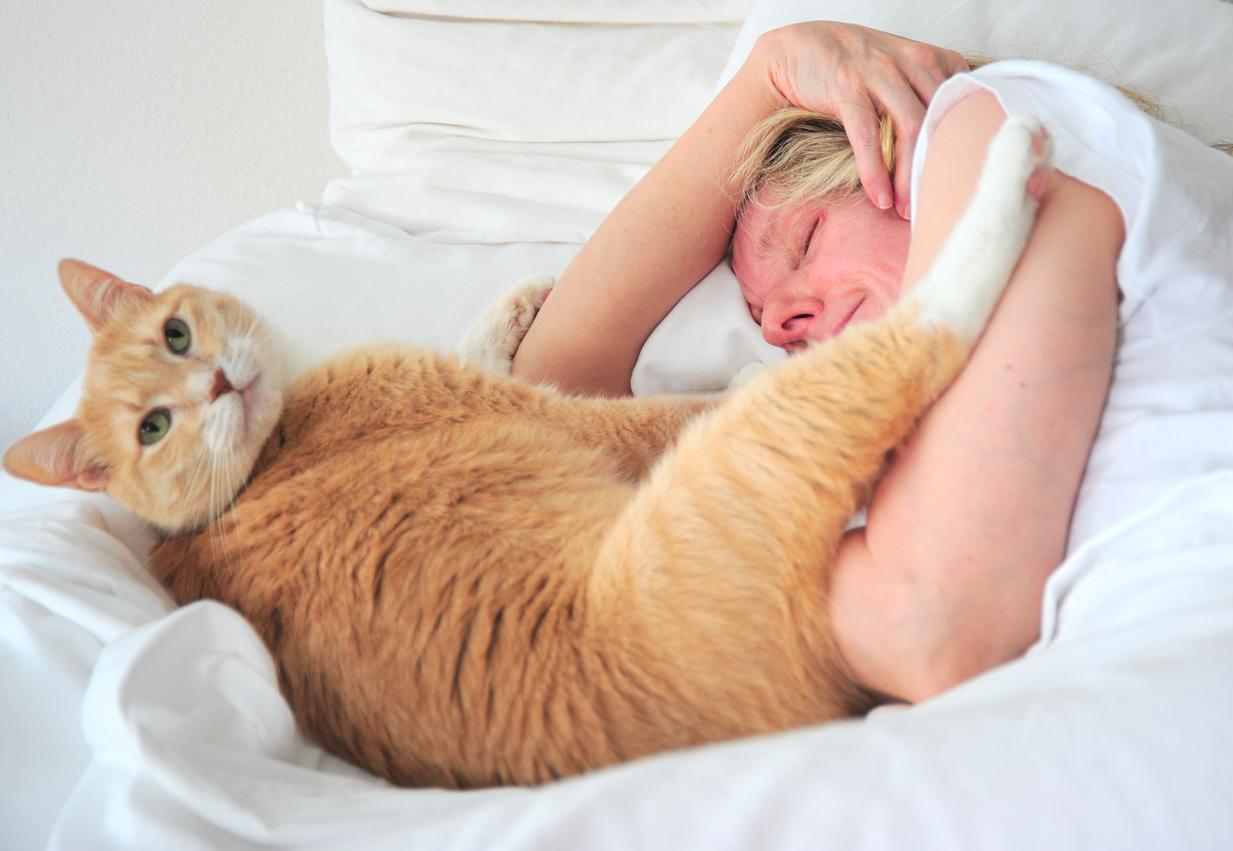Cats, with their warm and comforting presence, often seek the coziest spots in our homes, including our heads during the night. While it may be endearing, it can also disrupt your sleep. Training your cat to not sleep on your head is possible with some patience and guidance. Here’s how to achieve peaceful nights:
1. Provide an Attractive Alternative (75 words):
Cats love warmth and soft surfaces. Offer your feline friend a comfortable bed or a designated sleeping area near your own. Make it enticing with cozy blankets and their favorite toys.
2. Consistent Routine (75 words):
Establish a regular feeding and playtime schedule. Cats are more likely to adjust their behavior when they have a predictable routine. Engage in interactive play with your cat to tire them out before bedtime.
3. Positive Reinforcement (50 words):
Use positive reinforcement when your cat chooses the desired sleeping area. Offer treats, gentle praise, or pets to create a positive association with the new spot.
4. Avoid Negative Reactions (50 words):
Refrain from shouting, pushing, or punishing your cat if they sleep on your head. This can create fear and confusion and may not lead to the desired behavior change.
5. Make Your Head Less Appealing (75 words):
If your cat persists, make your head an unattractive spot. Cats dislike citrus scents, so apply a bit of citrus-scented lotion or a few drops of essential oil on your hair before bedtime. This should deter them from snuggling up on your head.
6. Use a Physical Barrier (75 words):
A physical barrier like a pillow fort or a strategically placed body pillow can create a boundary between you and your cat. Cats are less likely to crawl over or around obstacles to reach your head.
7. Be Patient and Consistent (75 words):
Changing a cat’s behavior takes time. Be patient and consistent in redirecting your cat to their designated sleeping spot. It may take several weeks for them to break the habit.
8. Seek Professional Help (50 words):
If your cat’s behavior persists and is causing severe sleep disruptions, consider consulting a professional animal behaviorist or veterinarian for further guidance and solutions.
In Conclusion (25 words):
Training a cat to not sleep on your head requires patience, consistency, and understanding. With the right approach, you can enjoy restful nights while maintaining a loving relationship with your feline companion.


